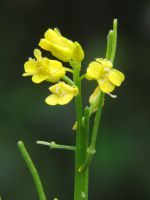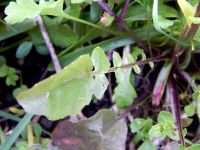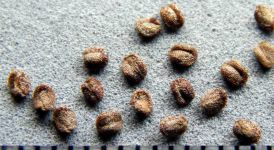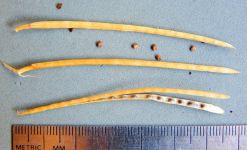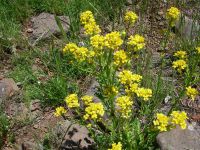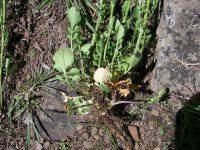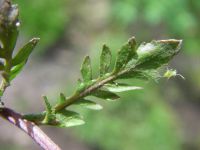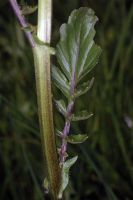Distribution: Occurring on both sides of the Cascades crest in Washington; Alaska to California, east to the Rocky Mountains, northern Great Plains, Great Lakes region, and northeastern North America.
Habitat: Meadows, stream banks and moist woods, low to mid-elevations in the mountains.
Flowers: March-July
Origin: Native
Growth Duration: Biennial, Perennial
Conservation Status: Not of concern
Pollination: Bees, butterflies
Mostly glabrous biennial from a taproot and simple crown, the stems stiff, erect, angled, single but freely-branched, 2-6 dm. tall.
Basal leaves long-petiolate, up to 12 cm. long, the blade usually lyrate-pinnatifid to pinnate, the lateral lobes 8-10, entire to round-toothed, the terminal lobe ovate, entire or irregularly toothed, the petiole often with long, marginal hairs; cauline leaves alternate, similar to the basal but reduced upward, becoming simple and sagittate.
Inflorescence of compound or single and terminal racemes, with reduced racemes in the lower leaf axils; pedicles stout, 2-3 mm. long; sepals 4, pale yellowish-green, 2 mm. long; petals 4, yellow, spatulate-oblanceolate, 3-5 mm. long; stamens 6; style beak-like, 0.5-2 mm. long; stigma slightly lobed.
Siliques 1.5-5 cm. long and 1.5-2.5 mm. broad, slightly compressed, 4-angled, strongly 1-nerved full length, erect or strongly ascending, nearly straight.
Publication: Index Seminum (Dorpat). 2. 1824.
Barbarea orthoceras Ledeb. var. dolichocarpa Fernald [Peck]
Barbarea stricta Andrz., misapplied [FNA7]
Campe orthoceras (Ledeb.) A. Heller
PNW Herbaria: Specimen records of Barbarea orthoceras in the Consortium of Pacific Northwest Herbaria database
WA Flora Checklist: Barbarea orthoceras checklist entry
OregonFlora: Barbarea orthoceras information
E-Flora BC: Barbarea orthoceras atlas page
CalPhotos: Barbarea orthoceras photos
















